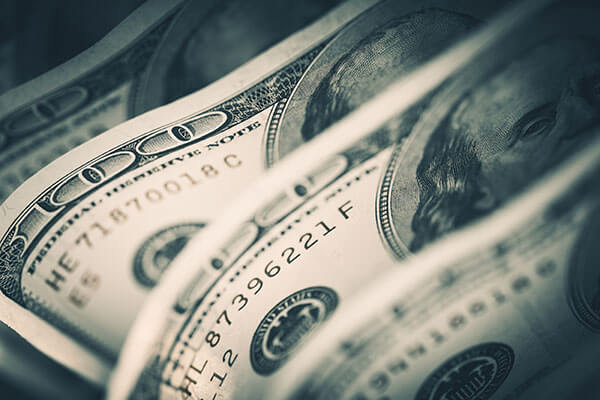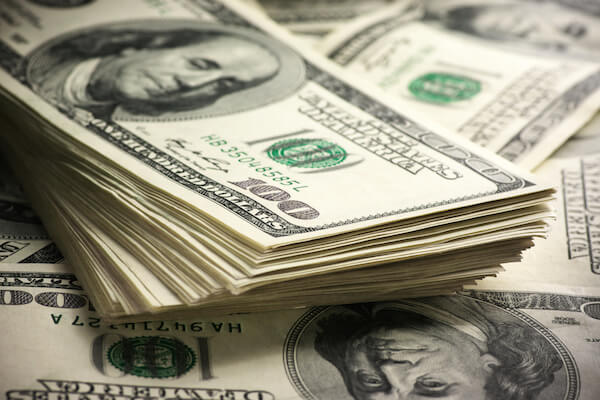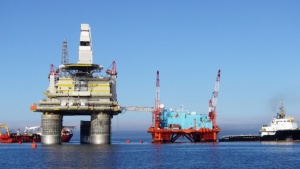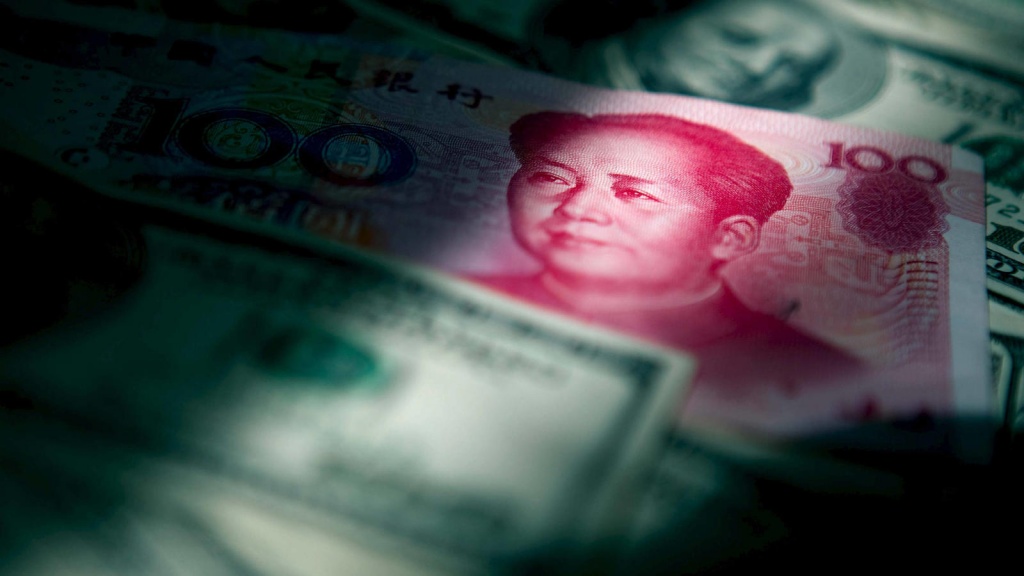Tag Archive for: brent
OPEC May Need to Extend Production Cuts to End of Next Year
/NewsBy Anthony Dipaola
“OPEC is certain to extend cuts in oil output when its ministers meet later in May and will need to keep limiting production until as late as the end of 2018, a veteran market analyst said.
The reaction of global crude inventories to the cuts will determine how long the Organization of Petroleum Exporting Countries and allied producers stick with their policy of pumping less oil to counter a global glut, said Fereidun Fesharaki, the head of industry consultant FGE. Oil may drop to as low as $40 a barrel if U.S. stockpiles increase, he said Monday at the Middle East Petroleum and Gas Conference in Dubai.
“The probability that OPEC will agree to extend its cuts is at 100 percent,” said Fesharaki, a former adviser in the late 1970’s to the Iranian Prime Minister. “And the cuts will have to be extended even beyond this year, to the middle or even to the end of next year.”
OPEC and 11 other producers including Russia agreed in December to pare production by 1.8 million barrels a day during the first half of this year. They’re seeking to eliminate an oversupply that depressed prices to less than half of their 2014 high, when benchmark Brent crude sold at $115 a barrel. Brent jumped 52 percent last year for the first annual gain after three consecutive decreases and was trading at $51.65 a barrel, down 40 cents, at 5:18 p.m. in Dubai.
The oil market needs more time to start using up stored inventories, which are on the verge of declining, Harold Hamm, chief executive officer of Oklahoma-based Continental Resources Inc., said at the same conference. U.S. oil output is poised to expand this year by at least 400,000 barrels a day, most of it from the Permian Basin, to a level of about 9.4 million barrels a day, he said.
OPEC plans to decide on May 25 at a meeting in Vienna whether to extend its production limits. There’s a consensus that the group will extend the cuts into the second half, Saudi Arabian Minister of Energy and Industry Khalid Al-Falih said last week.”
1 de mayo de 2017 6:33 GMT-5
Bloomberg
Oil stays low ahead of Opec meet
/NewsOil fell to its lowest in three months on Monday, as the prospect of another year of oversupply and weak prices overshadowed chances that Opec will reach a deal to cut output.
Donald Trump’s surprise win in last week’s US presidential election boosted the dollar and stocks but undermined oil. Crude has also fallen because of waning expectations that the world’s largest exporters will agree to reduce production this month.
Brent crude futures fell 50 cents on the day to $44.25 a barrel by 2:50pm GMT, while NYMEX crude futures dropped by 57 cents to $42.84 a barrel.
“In the same way that a strong Opec agreement was needed to continue the rally above $55, a lack of agreement will be needed to break below $40 and right now, we’re at $45,” Petromatrix strategist Olivier Jakob said.
Opec plans to cut or freeze output, but analysts doubt the group’s ability to reach an agreement at its meeting on 30 November.
Opec said on Friday its output hit a record 33.64 million barrels per day in October, and forecast an even larger global surplus in 2017 than the International Energy Agency (IEA) on Thursday.
Yet, Saudi Energy Minister Khalid al-Falih has said it was imperative for Opec to reach a consensus on activating a deal made in September in Algiers to cut production.
“Opec know what needs to be done but too few members will agree to take the production pain for the price gain, knowing also that the price gain incentivises non-Opec to produce more, lengthening the rebalancing process,” PVM Oil Associates analyst David Hufton said.
The dollar index hit an 11-month peak on Monday, driven by an aggressive sell-off in bonds that has pushed Treasury yields to their highest since January.
Ordinarily, a strong dollar would push oil lower, but the correlation between the two is at its most positive in two months, suggesting they are more likely to move in lockstep with one another than in opposite directions.
Data from the InterContinental Exchange on Monday showed investors delivered the largest weekly cut on record to their bets on a sustained rise in the price of oil.
Copyright: Up Stream
Oil Trades Near $44 as U.S. Election Sends Stocks, Dollar Higher
/NewsOil traded near $44 a barrel in New York amid a broader market rally driven by speculation Hillary Clinton’s chances of winning the U.S. election increased after the FBI said her handling of her e-mails wasn’t a crime.
Futures rose as much as 2.1 percent in New York following the Federal Bureau of Investigation’s report. The S&P 500 Index was set for its biggest gains since June and the dollar rose against its peers for the first time in seven sessions. Russia, the world’s biggest energy producer, is “on board” with an OPEC agreement to limit crude oil production to help re-balance the market, according to OPEC Secretary General Mohammed Barkindo.
“The U.S. election is front and center in all the markets,” said Chris Kettenmann, chief energy strategist at Macro Risk Advisors LLC in New York. “There was talk over the weekend of Russia agreeing to limit production in cooperation with OPEC, but we need to see a resolution from the Nov. 8 vote before the focus shifts to Nov. 30.”
Oil retreated below $45 a barrel following the failure of the Organization of Petroleum Exporting Countries to agree on output quotas for member countries on Oct. 28, which must happen before a deal can be finalized. OPEC pumped at a record rate in October, according to data compiled by Bloomberg.
West Texas Intermediate for December delivery rose 32 cents, or 0.7 percent, to $44.39 a barrel at 11:26 a.m. on the New York Mercantile Exchange. The contract slid 59 cents to $44.07 on Friday, the lowest close since Sept. 20. Prices fell 9.5 percent last week, the most in almost 10 months.
Election Focus
Brent for January settlement rose 4 cents to $45.62 a barrel on the London-based ICE Futures Europe exchange. Prices declined 8.3 percent last week, the most since January. The global benchmark traded at an 68-cent premium to January WTI.
“The stock market is up on the increasing likelihood of a Hillary Clinton victory,” said Thomas Finlon, director of Energy Analytics Group LLC in Wellington, Florida. “This is also strengthening the dollar, which is weighing on commodities.”
The Bloomberg Dollar Spot Index, a gauge of the greenback against 10 major peers, rose as much as 0.5 percent. A stronger U.S. currency reduces the appeal of dollar-denominated raw materials as an investment.
A magnitude 5 earthquake struck near Cushing, Oklahoma, the nation’s largest crude-storage hub, prompting some pipeline operators to shut operations at the site as a precaution. Oklahoma’s oil and gas regulator reported that all pipelines under its jurisdiction were operating again after shutting down as a precaution because of the temblor, centered less than 2 miles west of Cushing.
Gasoline dropped to the lowest level in seven weeks after Colonial Pipeline Co. restarted the largest U.S. line for the fuel Sunday, six days after an explosion and fire in Alabama during planned work.
December gasoline futures fell 1.5 percent to $1.3579 a gallon after touching $1.3561, the lowest since Sept. 20.
Copyright: Bloomberg
Oil Speculators Most Bullish Since ’14 After Wild Two Months
/NewsOil investors must be getting dizzy.
In the two months since OPEC began talking about capping production, speculators’ sentiment has swung wildly, with government and exchange data showing the four biggest weekly position changes ever for the two global benchmark crudes. The latest shift is to optimism, with money managers the most bullish on West Texas Intermediate oil in two years.
“Since the summer we’ve had big moves in net length,” said Mike Wittner, head of oil-market research at Societe Generale SA in New York. “It usually has trended up or down over a couple of months. Now this is happening in a matter of weeks. We’re seeing huge shifts.”
Money managers reduced bets on lower WTI prices by more than half in the past three weeks as OPEC agreed to its first deal to cut output in eight years. That drove net length to the highest since July 2014 in the week ended Oct. 11, Commodity Futures Trading Commission data show. Brent longs also rose, leaving the combined length of the two benchmark contracts at the highest in at least five years.
The Organization of Petroleum Exporting Countries agreed on Sept. 28 in Algiers to trim output to a range of 32.5 million to 33 million barrels a day, which is due to be finalized at the Vienna summit next month. OPEC took a step toward coordinated supply curbs with Russia last week and will meet for a “technical exchange” to set a road map for output levels later this month.
The swings in sentiment have tracked the rocky road to $50 a barrel oil. Speculators’ combined WTI and Brent crude net position rose or fell more than 100,000 contracts four times in the past two months, the only moves of that size in CFTC and ICE Futures Europe data going back to 2011.
Prices began to rise after OPEC’s president said Aug. 8 that the group would hold informal talks in Algiers and Saudi Arabia signaled Aug. 11 it was prepared to discuss taking action to stabilize markets. Futures gave up most of those gains amid doubts that Saudi Arabia and Iran to reach an deal, before the agreement in Algiers sparked the latest rally.
“The change in tone from the Saudis is important,” said Kurt Billick, the founder and chief investment officer of Bocage Capital LLC in San Francisco, which manages about $432 million in commodities equities and futures. “Getting to a yes in Vienna is challenging. That they are willing to talk about a deal is a big change.”
Money managers’ short position in West Texas Intermediate crude, or bets on falling prices, shrank by 28 percent to 71,407 futures and options. Longs rose 1.8 percent to the highest since June 2014. The resulting net-long position increased 13 percent.
WTI increased 4.3 percent to $50.79 a barrel in the report week. Prices on Monday were down 0.6 percent at $50.04 a barrel as of 9:13 a.m.
Other Markets
In the Brent market, money managers boosted net longs by 11 percent to 396,694 during the week, according to data from ICE Futures Europe. It was the most bullish total since April.
In fuel markets, net-bullish bets on gasoline rose 19 percent to 36,650 contracts, the highest since March 2015, as futures slipped 1.1 percent in the report week. Wagers on higher ultra low sulfur diesel prices climbed 46 percent to 9,074. Futures rose 2.1 percent.
The scale of the internal differences OPEC must resolve before securing a deal to cut supply was revealed Oct. 12 as the group’s latest output estimates showed a half-million-barrel difference of opinion over how much two key members are pumping.
“The bottom line is that they’ve made an agreement,” Wittner said. “If you are going short you are betting against the Saudis, which isn’t a good thing historically.”
Copyright: Bloomberg
Oil Bears Dominate Market as Doubt Grows Over Output Limits
/NewsThe longer OPEC and other producers talk about a ceiling on crude output, the more doubts grow in the market.
Money managers increased wagers on falling prices by the most in three months as a meeting between Russia and Saudi Arabia ended without specific measures to support prices. Producers have pledged to discuss action in Algiers later this month.
“The more they talk, the less people listen,” said Michael D. Cohen, an analyst at Barclays Plc in New York. “If you look at the actual statements from the Saudis, there’s not a lot of enthusiasm. They’re saying that either they don’t believe a substantial intervention is needed right now or that if other producers want a freeze, they’ll go along.”
Saudi Arabia’s Energy Minister Khalid Al-Falih said on Sept. 5 that he’s optimistic producers will agree to cooperate in Algiers. He spoke after meeting with his Russian counterpart, Alexander Novak, at the G-20 summit in China. Novak said that a freeze in production by OPEC and Russia would be the most effective way of stabilizing the market.
The International Energy Forum, including 73 countries that account for about 90 percent of the global supply and demand for oil and natural gas, will meet in the Algerian capital Sept. 26-28. The Organization of Petroleum Exporting Countries will hold informal talks on the sidelines of the gathering.
Parsing Words
“Everyone is sifting for clues on whether OPEC will reach an agreement to limit production or leave it uncapped with the potential for higher output,” said Tim Evans, an energy analyst at Citi Futures Perspective in New York. “At this point we’re waiting for the outcome of the talks. A lot of people are standing to the side while others are building positions with a specific view in mind.”
A freeze deal between OPEC members and other producers was proposed in February. A meeting in April ended with no accord because Iran refused to join, while Saudi Arabia insisted that its rival take part. Iran has said it’s too soon to cap output as it’s still restoring production curbed by sanctions.
Speculators bolstered their short position in West Texas Intermediate crude by 34,954 futures and options during the week ended Sept. 6, according to the Commodity Futures Trading Commission. Bets on rising prices declined.
Prices Drop
WTI futures dropped 3.3 percent to $44.83 a barrel in the report week and prices lost 1.6 percent to $45.15 at 9:18 a.m. New York time.
Futures surged Sept. 8 after the Energy Information Administration reported U.S. crude inventories fell 14.5 million barrels in the week ended Sept. 2, the biggest drop since January 1999. Prices retreated the next day as speculation grew the supply drop was a one-off caused by a tropical storm that disrupted imports and offshore production.
Money managers’ short position in WTI climbed to 130,274 futures and options. Longs fell 1.9 percent. The resulting net-long position dropped 19 percent. Net-long positions in Brent crude decreased by 37,226 contracts, according to ICE Futures Europe.
In other markets, net-bullish bets on gasoline declined 32 percent to 11,148 contracts. Gasoline futures dropped 9.1 percent in the report week. Net-long wagers on U.S. ultra low sulfur diesel tumbled 56 percent to 9,840 contracts. Futures declined 4.3 percent.
Gambling Momentum
“There’s a lot of gambling taking place,” said Stephen Schork, president of the Schork Group Inc., a consulting company in Villanova, Pennsylvania. “A lot of money managers are betting that a bottom has been put in but I’m skeptical.”
U.S. crude stockpiles remain at their highest seasonal level in more than 20 years. Refineries plan maintenance programs for September and October when fuel demand is lower. Over the past five years, refiners’ thirst for oil has dropped an average of 1.2 million barrels a day from July to October.
“The market will probably yo-yo in a range through the maintenance season but there’s downside risk,” Schork said. “If demand isn’t a strong as hoped and crude inventories rise, the market could take another leg lower.”
Copyright: Bloomberg
Brent oil rises to 2016 high; U.S. stocks gain
/NewsBrent oil prices hit a high for the year above $40 a barrel on Monday after data showed a smaller-than-expected build in U.S. crude stockpiles, helping U.S. stocks extend recent gains.
Brent was last up $1.87 at $40.59, while U.S. crude rose $1.58 to $37.50.
That lifted shares of energy stocks, which led gains in the S&P 500. The energy index climbed 1.5 percent. Biotechs also rallied, helping to support the broader market.
The Dow Jones industrial average was up 65.23 points, or 0.38 percent, to 17,072, the S&P 500 had gained 3.86 points, or 0.19 percent, to 2,003.85 and the Nasdaq Composite had added 9.78 points, or 0.21 percent, to 4,726.80.
MSCI’s all-country world stock index edged up 0.2 percent. In Europe, the pan-regionalFTSEurofirst 300 index provisionally closed down 0.3 percent.
The euro tumbled against the dollar before Thursday’s ECB meeting at which policymakers are expected to cut interest rates further into negative territory.
The euro was 0.5 percent lower at $1.0950 and down 0.7 percent at 124.34 yen. The U.S. dollar index was down 0.2 percent.
“The U.S. economy is doing relatively well. The dollar will likely hang on to its gains right now,” said Sireen Harajli, currency strategist at Mizuho Corporate Bank in New York.
In the U.S. bond market, U.S. Treasury yields rose in volatile trading as traders increased bets the Federal Reserve will raise interest rates this year in the wake of a strong February jobs report and ahead of a ECB meeting.
Friday’s payrolls data showed 242,000 jobs were created last month and assuaged fears the U.S. economy could be headed into recession. It also revived prospects of further Federal Reserve interest rate hikes this year, something markets had priced out.
The benchmark 10-year note’s yield rose to 1.918 percent, its highest in just over a month. It was last down 9/32 in price to yield 1.9127 percent, up from 1.883 percent late on Friday.
Copyrigth: Reuters
Global shares climb as firmer Chinese yuan eases deflation fears
/NewsWorld stocks rose sharply on Monday as China’s central bank fixed the yuan at a much stronger rate and oil cemented recent gains, easing fears of global deflation.
The rally belied a string of poor economic data from Beijing and Tokyo as demand for safe-haven assets waned, yet investors remained on edge due to lingering concerns about growth and the health of the financial sector.
European stocks rose 3 percent .FTEU3, having shed nearly 10 percent over the last fortnight, mirroring a bounce in Asia. Futures pointed to notional gains of 1.6 percent on Wall Street ESc1 but U.S. markets will be closed for a holiday.
Meanwhile, assets that tend to perform well in times of stress lagged. The Japanese yen lost ground against the U.S. dollar, top-rated German bond yields edged away from nine-month lows and gold slipped 2 percent after its strongest week in four years.
“We had a very strong statement from the Chinese authorities signaling they are committed to a stable currency and that’s helped sentiment … safe-haven flows have unwound somewhat,” said RIA Capital Markets strategist Nick Stamenkovic.
In China, spot yuan jumped more than 1 percent to 6.4934 per dollar – its firmest this year – after the People’s Bank of China set its daily midpoint 0.3 percent stronger and the head of the bank was quoted as saying speculators should not be allowed to dominate market sentiment. [CNY/] A stronger yuan reduces the risk that China will export deflation to the world, while worries about consumer price growth have also been helped by bounce back in the oil price.
Brent LCOc1 and U.S. crude futures CLc1 edged up on Monday adding to Friday’s 10 percent surge on speculation that the Organization of the Petroleum Exporting Countries (OPEC) might finally agree to cut output to reduce a world glut.
Euro zone long-term inflation expectations also rebounded from record lows on Monday even as Germany’s Bundesbank cut its forecast for consumer price growth in the bloc’s biggest economy.
DISCONNECT
China’s weak exports and imports in January, down 11.2 percent and 18.8 percent year-on-year respectively, seemed not to disturb markets. The resulting jump in the country’s trade surplus to $63 billion for the month might have helped, as that may offer support to the yuan.
The disconnect between markets and economics was perhaps starkest in Japan, where the Nikkei .N225 jumped more than 7 percent, putting its worst week since the depths of the global financial crisis in 2008 quickly behind it.
This came despite data showing the economy contracted by an annualized 1.4 percent in the last three months of 2015, more than expected.
MSCI’s broadest index of Asia-Pacific shares outside Japan rose 2.3 percent .MIAPJ0000PUS, after losing 10 percent of its value so far this year.
European shares followed in their wake, led by a 4 percent rebound in banking stocks .SX7P on news that the European Central Bank (ECB) is in talks to buy bundles of Italian bad bank loans as part of its asset-purchase program.
Yet some strategists cautioned that Monday’s rebound may prove short-lived, with concern that central banks have little ammunition left to fight off the heady mix of an oil-induced deflationary forces, capital outflows and economic weakness in China, and pressure on the world’s financial sector.
“It’s possible we could see calmer markets this week but we are not out of the woods yet,” Thomas Harr. global head of fixed income and currency research at Danske Bank in Copenhagen.
“For the last couple of weeks we have seen a bit of central bank fatigue – they have cut rates into negative but it isn’t having much of an impact.
Against a basket of currencies .DXY, the dollar was up slightly at 96.433 having been at its lowest in almost four months. Likewise, it edged up to 113.99 yen JPY=, having touched a 15-month trough just under 111.00 last week.
The euro was last down 0.6 percent at $1.1184 EUR=, having slipped from a 3-1/2 month peak of $1.1377.
Copyright: Reuters

Latest News
 Fundamental factors to strengthen Pemex12 August, 2019
Fundamental factors to strengthen Pemex12 August, 2019 Offshore Project Development: The Road to First Oil26 July, 2019
Offshore Project Development: The Road to First Oil26 July, 2019







